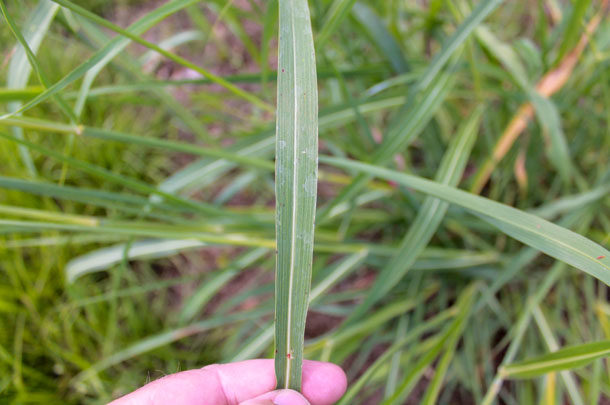Its beginnings
Native to Turkey, the grass was introduced in the southeastern U.S. in South Carolina in the early 1800s. Johnsongrass is named after Colonel William Johnson, who planted the species on his river bottom farm in Alabama around 1840. Since its introduction, the grass has spread throughout the southern U.S. and is now listed as a noxious weed in 46 states. It is so highly invasive and yield-limiting in crops that it ranks as one of the 10 worst weeds in the world.
Environmentally stressed johnsongrass can be deadly
Johnsongrass that’s healthy can provide excellent forage for livestock. Under stress, johnsongrass can become poisonous and produce toxic amounts of prussic acid (cyanide) following frost, drought or physical stress such as from trampling. All livestock are susceptible to cyanide poisoning, but ruminant animals are the most susceptible. Cyanide is rapidly active in cattle and can cause symptoms within five minutes after ingesting. Death can occur in as little as 15 minutes or within a few hours. Additionally, the plant can accumulate high nitrate levels and produce nitrate poisoning in sheep and cattle. The plant could develop high nitrate levels after fertilization and during drought. Horses should never graze johnsongrass because of the potential for sorghum cystitis, which can eventually cause permanent damage to a horse’s spinal cord.

When can cattle safely graze johnsongrass?
Grazing johnsongrass is certainly possible for ruminant livestock when the grass is not under stress or after the grass has recovered from environmental stress. Following drought stress, wait at least five days after good rainfall has occurred before grazing. Johnsongrass forage killed back by a heavy frost should be avoided for at least two weeks.
There is little threat of cyanide poisoning from johnsongrass hay that’s been cured properly. However, nitrate poisoning from fed hay is still possible. It’s a smart move to get the johnsongrass hay tested prior to feeding. Your local cooperative extension service can assist you in this area.
Controlling johnsongrass in forages and hay meadows
Johnsongrass can be a highly invasive weed that reduces hay yields and overtakes pastures. There is usually a higher degree of difficulty to selectively kill weedy grasses infesting forages than it is to kill broadleaves. However, effective johnsongrass control options exist for bermudagrass and bahiagrass pastures and hay meadows. Sulfosulfuron (Outrider) is highly effective for selectively removing johnsongrass infesting bermudagrass and bahiagrass with little potential for forage injury. Metsulfuron plus nicosulfuron (Pastora) works well on johnsongrass infesting bermudagrass. This product will injure or kill bahiagrass. For johnsongrass infesting fescue, spot treat with glyphosate or wipe the tall-growing weed with a glyphosate solution using a wick bar type weed wiper.
In summary, johnsongrass has been grazed for over 150 years and can still be nutritional forage for your cattle. However, be aware of the cultural and environmental issues that may cause toxicity with the grass. Neglecting the danger can result in the death of livestock. If you would like to remove the threat, treatment options exist, especially for bermudagrass and bahiagrass pastures. ![]()
Ron Strahan is an associate professor at the Louisiana State University AgCenter in Baton Rouge, Louisiana. Email Ron Strahan.
PHOTO 1: Listed as a noxious weed in 46 states, johnsongrass can provide forage if managed but becomes deadly to ruminants if under stress.
PHOTO 2: Johnsongrass can easily become problematic in pastures unless effective control measures are used for abatement. Photos by Ron Strahan.







